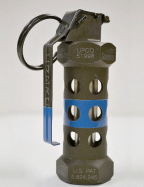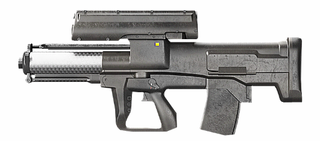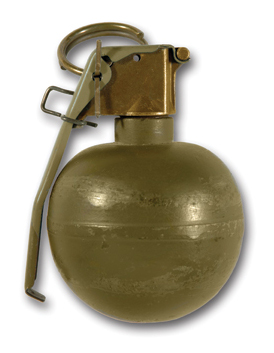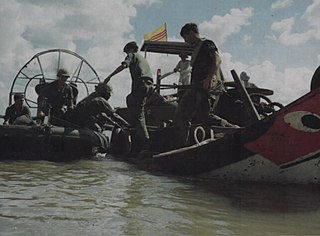
Non-lethal weapons, also called nonlethal weapons, less-lethal weapons, less-than-lethal weapons, non-deadly weapons, compliance weapons, or pain-inducing weapons are weapons intended to be less likely to kill a living target than conventional weapons such as knives and firearms with live ammunition. It is often understood that unintended or incidental casualties are risked wherever force is applied, but non-lethal weapons try to minimise the risk of casualties as much as possible. Non-lethal weapons are used in policing and combat situations to limit the escalation of conflict where employment of lethal force is prohibited or undesirable, where rules of engagement require minimum casualties, or where policy restricts the use of conventional force. These weapons occasionally cause serious injuries or death; the term "less-lethal" has been preferred by some organizations as it describes the risks of death more accurately than the term "non-lethal", which some have argued is a misnomer.

The Steyr AUG is an Austrian bullpup assault rifle chambered for the 5.56×45mm NATO intermediate cartridge, designed in the 1960s by Steyr-Daimler-Puch, and now manufactured by Steyr Arms GmbH & Co KG.

A grenade launcher is a weapon that fires a specially designed, large-caliber projectile, often with an explosive, smoke, or gas warhead. Today, the term generally refers to a class of dedicated firearms firing unitary grenade cartridges. The most common type are man-portable, shoulder-fired weapons issued to individuals, although larger crew-served launchers are issued at higher levels of organization by military forces.

Stielhandgranate is the German term for "stick hand grenade" and generally refers to a prominent series of World War I and World War II–era German stick grenade designs, distinguished by their long wooden handles, pull cord arming and cylindrical warheads. The first models were introduced by the Imperial German Army during World War I and the final design was introduced during World War II by the German Wehrmacht.

A stun grenade, also known as a flash grenade, flashbang, thunderflash, or sound bomb, is a less-lethal explosive device used to temporarily disorient an enemy's senses. Upon detonation, a stun grenade produces a blinding flash of light and an extremely loud "bang". They are often used in close-quarters combat, door breaching, and riot control, typically to stun enemies or distract them.
A rifle grenade is a grenade that uses a rifle-based launcher to permit a longer effective range than would be possible if the grenade were thrown by hand.

Physical strength is the measure of a human's exertion of force on physical objects. Increasing physical strength is the goal of strength training.

The XM25 Counter Defilade Target Engagement (CDTE) System, also known as the Punisher and Individual Semiautomatic Air Burst System was an airburst grenade launcher with programmable ammunition derived from the XM29 OICW. It was fielded to soldiers serving in the War in Afghanistan in 2010, after which malfunctions and 2013 program budget cuts delayed official entry into service, planned for early 2017. In early 2017, the contract with Orbital ATK was cancelled, calling the future of the entire program into question. The program was officially terminated on 24 July 2018.

The M67 grenade is a fragmentation hand grenade used by the United States military. The M67 is a further development of the M33 grenade, itself a replacement for the M26-series grenades used during the Korean and Vietnam Wars, and the older Mk 2 "pineapple" grenade used since World War I.

The Mk 2 grenade is a fragmentation-type anti-personnel hand grenade introduced by the U.S. armed forces in 1918. It was the standard issue anti-personnel grenade used during World War II, and also saw limited service in later conflicts, including the Korean War and Vietnam War. Replacing the failed Mk 1 grenade of 1917, it was standardized in 1920 as the Mk II, and redesignated the Mk 2 on April 2, 1945.

The United States Marine Corps Reconnaissance Battalions are the special operations reconnaissance assets of Marine Air-Ground Task Force that provide division-level ground and amphibious reconnaissance to the Ground Combat Element within the United States Marine Corps. Division reconnaissance teams are employed to observe and report on enemy activity and other information of military significance in close operations. The Military Occupational Specialty code for Reconnaissance Marine is 0321.
The military of the United States has used many different types of hand grenades since its foundation.

The M84 is the currently-issued stun grenade ("flashbang") of the United States Armed Forces and SWAT teams throughout the United States. Upon detonation, it emits an intensely loud "bang" of 170–180 decibels and a blinding flash of more than one million candela within 5 feet of initiation, sufficient to cause immediate flash blindness, deafness, tinnitus, and inner ear disturbance. Exposed personnel experience disorientation, confusion and loss of coordination and balance. While these effects are all intended to be temporary, there is risk of permanent injury. Consequently, the M84 is classified as a less-lethal weapon.

The HG 85 is a round fragmentation hand grenade designed for the Swiss Armed Forces and still produced by RUAG Ammotec in Switzerland. HG 85 is the internal designation of the Swiss Army and replaces the HG 43 from World War II.

The F1 grenade is manufactured by Thales Australia exclusively for the Australian Defence Force as a primary defensive anti-personnel hand grenade.

A grenade is an explosive weapon typically thrown by hand, but can also refer to a shell shot from the muzzle of a rifle or a grenade launcher. A modern hand grenade generally consists of an explosive charge ("filler"), a detonator mechanism, an internal striker to trigger the detonator, an arming safety secured by a transport safety. The user removes the transport safety before throwing, and once the grenade leaves the hand the arming safety gets released, allowing the striker to trigger a primer that ignites a fuze, which burns down to the detonator and explodes the main charge.

Skirmish Paintball is a paintball arena company in the United Kingdom, Ireland, and Australia. Paintball venues operated under the Skirmish trademark are privately owned.

Operation Toan Thang II was an operation conducted by the US Army and the Army of the Republic of Vietnam (ARVN) during the Vietnam War between 1 June 1968 and 16 February 1969. It was designed to keep pressure on the Viet Cong (VC) and the People's Army of Vietnam (PAVN) forces at III Corps.
Operation Toan Thang IV was a U.S. Army and Army of the Republic of Vietnam (ARVN) operation conducted between 1 November 1969 and 1 May 1970 in the Vietnam War. The operation was designed to keep pressure on Vietcong (VC) and People's Army of Vietnam (PAVN) forces in III Corps.















